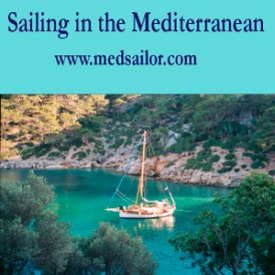Podcast: Play in new window | Download (Duration: 30:40 — 28.2MB)
Subscribe: Apple Podcasts | Email | RSS | More
Full Course is available at:
For $59.99
Lesson Summary:
Audio GED Prep Science Lesson 2
Life Science: Biochemistry
There are two main ways in which organisms obtain the energy that they need in order to exist from day to day. There are some organisms like humans who eat other plants and animals in order to create energy. These organisms take in oxygen and expel carbon dioxide. Then, there are other organisms that you a process called photosynthesis in order to convert the light from the sun into usable energy. These organisms, mostly plants, take in carbon dioxide and expel oxygen. Thus, both kinds of organisms are in a mutually-beneficial relationship that helps support all life.
ADP and ATP
ATP (Adenosine triphosphate) is a molecule in the body that cells use for energy transfer. When an organism processes food, it creates ATP in cells. Each molecule of ATP has three branches or phosphate groups that can be broken off. When a cell breaks one of these bonds, ATP turns into ADP (Adensoinediphosphate), which chemical reaction creates energy. Notice that “tri” means three and “di” means two. The energy created then powers cells to continue their processes.
Photosynthesis
Photosynthesis is a process that plants and similar life forms use to create energy. Organisms who use photosynthesis contain a chemical called chlorophyll which lends a green color to these life forms. They are green because they use the energy from the blue and red wavelengths of light, but not green. Red and blue get absorbed, but green stays.
During photosynthesis, sunlight strikes the chlorophyll in plants in cells that all plants have that are known as chloroplasts. In these cells water and carbon dioxide combine using the energy from sunlight to create glucose (sugar) and oxygen. Water is made of two hydrogen atoms and one oxygen (H2O) and carbon dioxide is made of one carbon atom and two oxygen atoms. (CO2) Glucose is made of carbon, hydrogen and oxygen (C6H12O6). The glucose is used for energy and the oxygen is let off as a waste product, to be used by animals who need oxygen to create energy instead of carbon dioxide.
DNA
DNA (deoxyribonucleic acid) is the molecule that creates the blueprint to make living cells. Almost all living organisms use DNA. It contains instructions based on different combinations of chemicals called bases: adenine (A), guanine (G), cytosine (C) and thymine (T). These bases fit together with each other to create what are called base pairs, which, along with a sugar molecule and phosphate molecule, create the “rungs” on the ladder of DNA. A pairs with T, and C with G. The base pairs form the “rungs” and the sugar and phosphate form the vertical sides of the ladder, which is then twisted around.
A single piece of human DNA contains about 3 billion of these base pairs, and 99 percent of these base pairs are the same on most people, with only the 1 percent making us unique.
DNA is a powerful substance that is able to make copies of itself in order to spread the necessary instructions to other cells so that more copies of cells can be made. When the body “reads” DNA, it receives instructions to make a certain protein, called a gene, and these genes are what determine the properties of a life form, from hair color, to eye color, to skin color, to less obvious things such as what diseases a person might be prone to in life.
There are over 20,000 genes in humans, which together make up what is called the human genome. Scientists have mapped this genome in order to better help people predict what their genes will cause.
RNA
RNA stands for ribonucleic acid, and it is similar to DNA. It is made up of nucleotides with a nitrogenous base, a sugar and a phosphate, just like DNA. Unlike DNA, it comes in a variety of shapes as there are different varieties of RNA.
While DNA is used to relay genetic instructions, RNA molecules are used in creating proteins and sometimes help with transmitting genetic information. While DNA is made up of the bases ATC and G, RNA is made up for AUC and G, where Uracil replaces Thymine.
There are several kinds of RNA.
mRNA is called messenger RNA. It caries genetic information from DNA to a structure called a ribosome, which is where proteins are created.
tRNA or transfer RNA and rRna or ribosomal RNA are used to actually create the protein. The RNA contains small chains of three bases that correspond to what is called an amino acid, which are the building blocks for proteins. The messenger RNA brings in the message of what to make, and the other kinds of RNA build a chain of amino acids, which becomes a protein.
Parts of the Cell
Nucleus: This is the center of the cell that controls all of the functions of the cell.
Nucleoplasm: This is the thick fluid inside the nucleus.
Nucleolus: This a storage in the nucleus that carries genetic information as RNA.
Cell Membrane: This contains the cell and everything in it. It is porous and can let things in and out.
Cell Wall: This is a barrier made of cellulose that plant cells have.
Cytoplasm: This is the thick fluid in cells that contains all of the parts of the cell.
Vacuoles: These are storage containers that carry food, minerals and waste. They are large in plants and small in animals.
Mitochondria: This is the power plant of the cell.
Chloroplast: These are parts of cells in plants that contain chlorophyll.
Ribosomes: These are tiny spheres that help make proteins.
Endoplasmic Reticulum: This connects the cell membrane to the nucleus and acts as a transport path.
Golgi Bodies: These are tube structures that help package protein.
Lysosomes: These are small sacs with digestive fluid that can be used to destroy a cell.
Source:
http://www.biology4kids.com/files/plants_photosynthesis.html
http://ghr.nlm.nih.gov/handbook/basics/dna
https://www.genome.gov/25520880
http://www.news-medical.net/health/What-is-RNA.aspx
http://jgimp.tripod.com/cells.html
©2015 Franz Amussen, All Rights Reserved
If you are interested in learning to sail listen to the podcast “Sailing in the Mediterranean”
at http://www.medsailor.com



